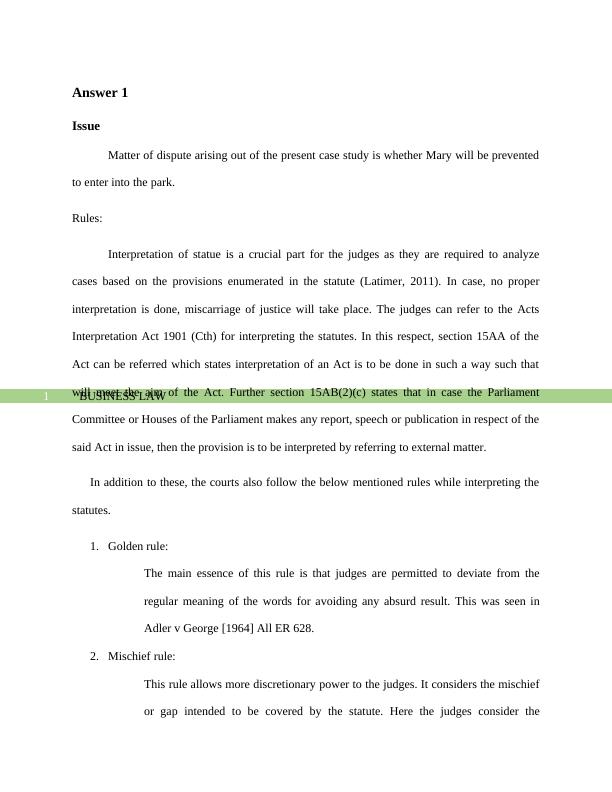Business Law: Interpretation of Statutes and Exclusion Clauses
Added on 2022-10-10
7 Pages1437 Words422 Views
End of preview
Want to access all the pages? Upload your documents or become a member.
Business Law: Interpretation of Statutes and Exclusion Clauses
|6
|1342
|344
Business Law: Interpretation of Statutes and Exclusion Clauses
|7
|1628
|256
Law 100 | Issue, Application and Conclusion
|5
|1027
|73
Interpretation of Section 4 of Good Food Act 2017 (Cth)
|9
|2411
|303
Civil Law
|6
|1184
|62
Statutory Interpretation: Seeking the Intention of the Law
|10
|3854
|319



